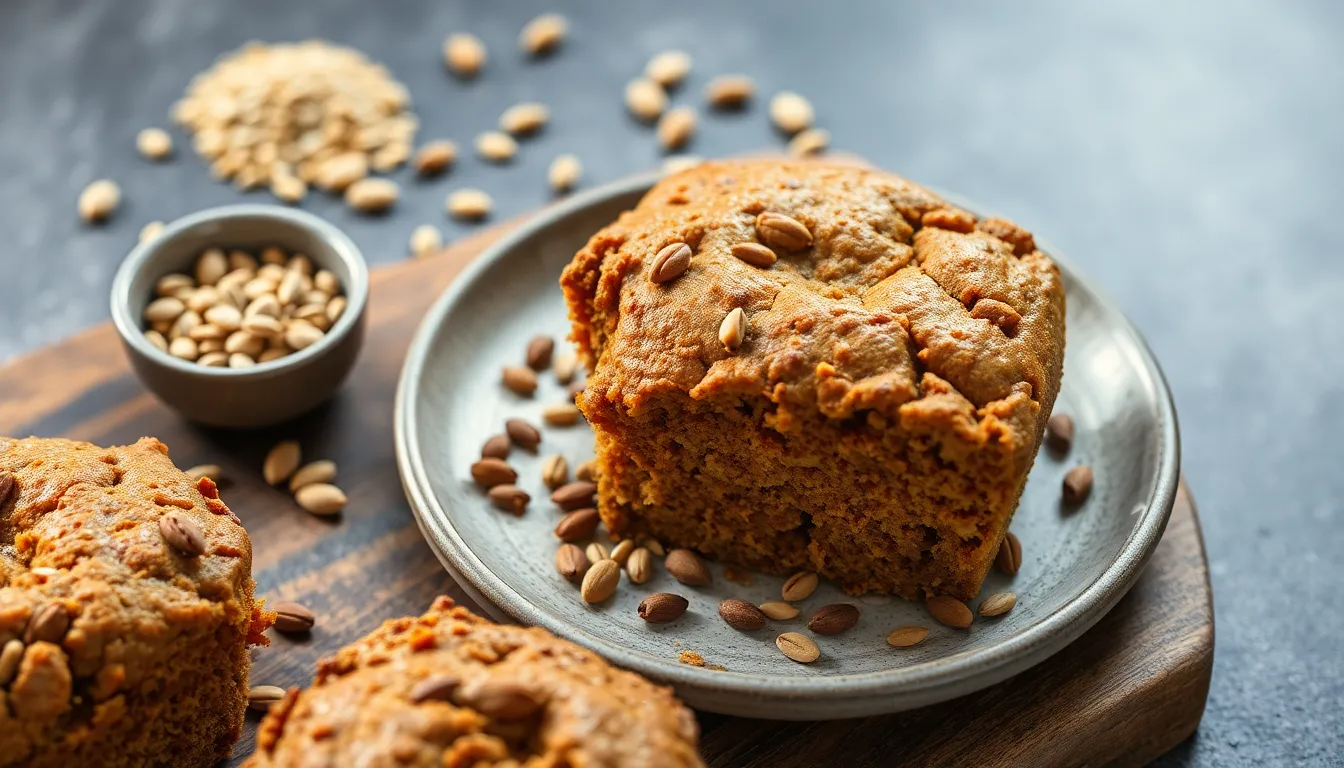The Role of Seeds in Gluten-Free Baking
In recent years, gluten-free baking has gained immense popularity, not only among those with gluten sensitivities or celiac disease but also among health-conscious individuals seeking to diversify their diets. The rise of gluten-free options in grocery stores, restaurants, and home kitchens reflects a broader understanding of dietary needs and preferences. While many people associate gluten-free baking with difficulty and disappointment, the use of seeds can greatly enhance flavor, nutrition, and texture in gluten-free recipes.
Section 1: Understanding Gluten-Free Baking
1.1 What is Gluten-Free Baking?
Gluten-free baking refers to the preparation of baked goods without gluten, a protein found in wheat, barley, and rye. For individuals with gluten sensitivities or celiac disease, consuming gluten can lead to severe health issues, including digestive problems, fatigue, and more. As a result, gluten-free baking is essential for maintaining their health and well-being. However, it is also embraced by those looking to adopt a different dietary lifestyle.
1.2 Challenges of Gluten-Free Baking
Gluten plays a crucial role in traditional baking, providing structure, elasticity, and a chewy texture. The absence of gluten in gluten-free baking presents several challenges, including:
- Texture: Gluten-free baked goods often turn out crumbly or dense without the right mix of ingredients.
- Rising: Many gluten-free flours do not rise as well as their gluten-rich counterparts, leading to flat and unappealing products.
- Flavor: The absence of gluten can also affect the flavor profile, making it essential to incorporate ingredients that enhance taste.
Section 2: Nutritional Benefits of Seeds
2.1 Overview of Different Seeds
Seeds are a powerhouse of nutrition and can significantly improve the quality of gluten-free baked goods. Here are some common seeds used in baking:
- Chia Seeds: Small but mighty, chia seeds are known for their ability to absorb liquid and form a gel, making them excellent binding agents.
- Flax Seeds: Ground flax seeds are often used as an egg substitute due to their binding properties and high omega-3 content.
- Sesame Seeds: Rich in calcium and beneficial fats, sesame seeds add a nutty flavor and are great for sprinkling on baked goods.
- Pumpkin Seeds: These seeds are packed with protein and are perfect for adding crunch and nutrition to breads and muffins.
- Sunflower Seeds: A versatile seed that adds a delightful crunch and is often used as a topping or mixed into batters.
2.2 Nutritional Value Table
| Seed | Protein (g per 100g) | Fiber (g per 100g) | Omega-3 Fatty Acids (g per 100g) | Other Benefits |
|---|---|---|---|---|
| Chia Seeds | 17 | 34 | 18 | Rich in antioxidants |
| Flax Seeds | 18 | 27 | 22 | Promotes heart health |
| Sunflower Seeds | 21 | 8.6 | 0 | Source of vitamin E |
| Pumpkin Seeds | 30 | 18 | 0 | Rich in magnesium |
| Sesame Seeds | 18 | 9.5 | 0 | Supports bone health |
Section 3: The Functional Role of Seeds in Gluten-Free Recipes
3.1 Binding Agents
One of the primary roles of seeds in gluten-free baking is their ability to act as binding agents. Both flax and chia seeds can replace eggs when mixed with water, creating a gel-like substance that helps hold ingredients together. This is particularly useful in recipes for cookies, pancakes, and bread where traditional eggs provide moisture and structure.
3.2 Texture Enhancements
Seeds contribute significantly to the texture of gluten-free baked goods. Their crunchy nature can add an appealing contrast to soft batters or doughs. For example:
- Chia Seeds: When used whole, they provide a unique pop in the mouth, enhancing the overall texture.
- Pumpkin Seeds: These seeds offer a rich crunch when scattered over bread or muffins before baking.
- Sunflower Seeds: Often sprinkled on top or mixed in, they provide a delightful chewiness.
3.3 Flavor Additions
Seeds can also elevate the flavor of gluten-free baked goods. Depending on the type of seeds used, they can impart a nutty, earthy, or even slightly sweet taste. For instance:
- Sesame Seeds: They add a rich, nutty flavor and are perfect for topping gluten-free bread.
- Pumpkin Seeds: With their rich, slightly sweet flavor, they enhance muffin batters and cookies.
- Flax Seeds: Ground flax lends a subtle nuttiness to pancakes and oatmeal cookies.
Section 4: Creative Ways to Incorporate Seeds in Gluten-Free Baking
4.1 Seed-Based Flour Blends
Creating your own flour blends that include ground seeds can significantly improve the nutritional profile of your baked goods. For example, a blend of almond flour, flaxseed meal, and coconut flour can produce a nutritious base for pancakes or bread. Here’s a simple recipe for a seed-based flour blend:
- 1 cup almond flour
- 1/4 cup flaxseed meal
- 1/4 cup coconut flour
4.2 Seed Sprinkles
Before baking, consider adding a sprinkle of seeds on top of your baked goods. This not only enhances the appearance but also boosts the crunch factor. Try mixing different seeds for a colorful and nutritious topping!
4.3 Seed-Infused Oils
Infusing oils with seeds like sesame or pumpkin can add a new dimension to your baking. Use these oils in place of regular oils in recipes for bread or muffins to introduce a distinct flavor.
4.4 Seed Butters
Just like nut butters, you can make seed butters from pumpkin or sunflower seeds. These can be spread on gluten-free bread or incorporated into cookie recipes for added moisture and taste.
Conclusion
Gluten-free baking may present unique challenges, but the incorporation of seeds can transform the experience into one of creativity and deliciousness. By understanding the roles that seeds play, from providing essential nutrients to enhancing flavor and texture, bakers can craft delightful gluten-free treats that everyone can enjoy. So the next time you pull out your gluten-free baking supplies, don’t forget about the power of seeds—your taste buds will thank you!




